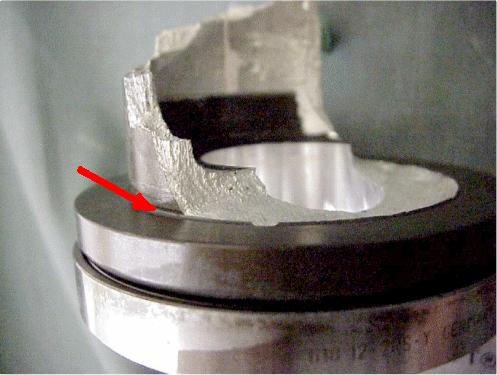|

By
Gary Wolf
President, RAA Canada
Photos by Gary Walsh
In
late June of 2004, RAA (Canada’s Recreational Air-craft
Association) member Gary Walsh experienced a thrown prop
blade and the near departure of his engine from the
mount of his 912S-powered Kitfox amphibian. The prop was
a 3 blade NSI CAP 140. CAP stands for “Cockpit
Adjustable Propeller”. The prop had only 200 hours on it
since new, and one of the blades chose this time to
leave the hub. Gary remembers flicking off the ignition,
but the vibration was so intense that both carbs came
out of their spigots and may have been the real reason
the engine shut down so quickly. Fortunately all of the
hoses and wires and a few engine mount tubes retained
the engine within the cowling, so the C of G was not
affected when the engine mount failed.
Gary
had previously owned a Cessna Aerobat and had frequently
practiced dead stick landings, so he managed to get the
Kitfox safely on the ground. After landing he got out to
survey the damage, and found that the departed blade was
embedded in the top of his float, taking out the nose
gear retract linkage in the process. The blade was
intact except for the lower part of its retaining cuff,
which was still secured to the hub.

This
photo shows the machined undercut groove in the corner
of the sleeve. (Refer to the arrow). The fracture
appears to have originated in this groove.
We
inspected the broken blade and saw that there was a
beach mark, typical of a fracture that had been waiting
to let go. Gary contacted Lance Wheeler, owner of NSI,
to |
|

Looking closely at this photo, you’ll see one of the
three blades missing from the NSI hub and firmly planted
into the top of the Kitfox’s port float.
find
out if this sort of event had happened before. Lance
said than this was the first failure where there was no
previous damage history, such as a prop strike. Even
though Lance felt the cause was torsional vibration
caused by the higher compression of the 912S engine,
Lance promised that he would take care of Gary’s
expenses in terms of the prop; Lance has never promised
to address any other damage.
A bit
of history - Gary had bought his Kitfox with this CAP
140 propeller two years ago and it had not come with a
prop manual so he ordered one. A few months before this
prop threw a blade, Gary had noticed some play at the
tips of the prop blade and called NSI for advice. The
prop hub was also throwing grease. Lance said that he
should not idle the engine below 2500 rpm and that the
play was normal. Centrifugal force would eliminate this
if the prop were not idled below 2500 engine rpm.
Back
to July - Gary removed the engine and took it to
Tri-City Aero for an inspection of the gearbox. He also
made photographs of the hub and blades and then took the
damaged parts to Cambridge Materials Testing, a local
test lab that spends its days determining why bridges
fall down and auto engine blocks crack. This lab
inspected the parts and found that the crack had been
growing for quite awhile. They issued a report that
pointed at the sharp inside corner radius of the cuff as
the culprit. At Lance’s request Gary shipped the entire
propeller with hub to NSI in Arlington, WA, USA. Gary
also met Lance at Oshkosh, and delivered a copy of the
lab report. Gary then began the wait.
At
first it was Oshkosh that prevented Lance from
responding. Next, Lance had a medical condition that had
to be taken care of. Gary meanwhile retrieved his 912S
and bought a new motor mount. He found someone to talk
to about the eventual repair of the damaged fiberglass
float. There were many calls to NSI but none were |